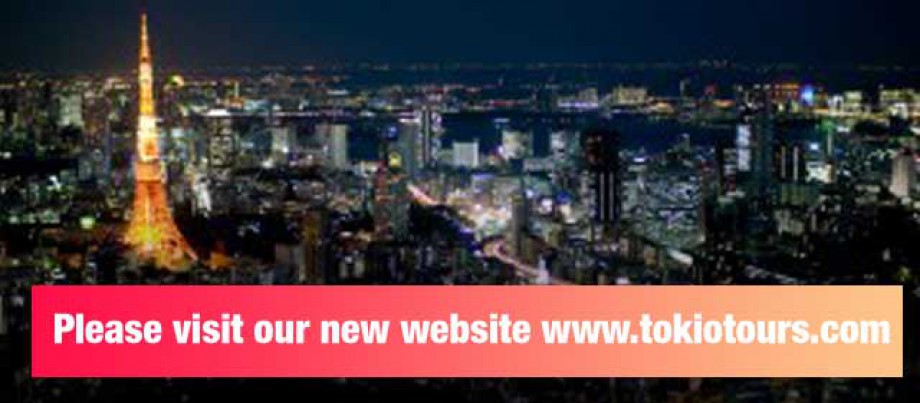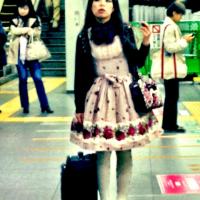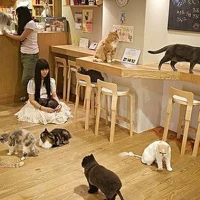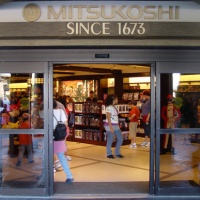

Okazaki City is located southeast of Nagoya in Aichi Prefecture and prospered in the Edo period (1600-1868) as a castle town and an important post-station along the Tōkaidō Road.
History
In the Sengoku period (1467-1568), the area of modern-day Aichi Prefecture was controlled by the Matsudaira clan, who would later be known as the Tokugawa and who in 1600 established a shogunate that would control Japan’s fate during the Edo period (1600-1868). The first fortifications were built in 1455 and later moved across the Yahagi River to the current location of Okazaki Castle by the Matsudaira. The castle is usually associated with Tokugawa Ieyasu, who was born there in 1543. Situated along the Tōkaidō Road, which connected Edo (present-day Tokyo) with Kyoto, Okazaki City prospered in the Edo period, developing into a busy castle town and commercial hub with a postal station.
Okazaki was and still is renowned for its production of fireworks. Okazaki Domain was one of the very few regions permitted by the shogunate to produce gunpowder. Another famous local product is miso (fermented bean paste). Nowadays, Okazaki is a satellite town, with many of its residents commuting to Nagoya just some 35 kilometres away.
Sightseeing
Okazaki Castle
Tokugawa Ieyasu’s birthplace. Read more about it here.
Hatcho Miso
“Miso” is a slow-fermented soybean paste with a strong salty flavor, and forms one of the bases of Japanese cooking. Very versatile, it is used in sauces, with meats, fish, vegetables, tofu, but above all in Miso Soup, a part of the staple diet of Japanese and as common as rice. Breakfast is not breakfast without miso-shiro (miso soup), and it has entered into many sayings. Don’t use it, but for example, “ore no miso shiro wo tsukutte kureru?” or “will you make my miso soup?” meaning “Will you marry me?” Several types exist – white and red being the main varieties – and every region of the country has its peculiar method of producing miso. Miso is made by fermenting soybeans with water, and while some types include other ingredients such as rice, Hatcho Miso is renowned for its traditional method of production (unchanged for at least 500 years) and distinctive taste and color.
History:
Hatcho Miso is made by the Hatcho Miso Company in Hatcho, or Eighth Street, of Okazaki. Hatcho Miso is famous for the same reason that Okazaki is famous: Tokugawa Ieyasu. Apparently having a liking for miso soup made with hatcho miso (or so the company says), Tokugawa Ieyasu made sure that his armies were supplied with the local bean paste. Being very long lasting, very high in protein, energy and other nutrients, Hatcho Miso is an ideal trail food. Having Conquered Japan, Tokugawa moved the capital of Japan from Kyoto to Edo (no Tokyo), and continued to have Hatcho Miso shipped to his castle there. The Hatcho Miso Company became famous as purveyors to the Shogun and later gained even more prestige as purveyors to the Emperor.
Making Hatcho Miso:
Obviously changes have taken place in the process of making Hatcho Miso, but fundamentally it is the same as it was in the days of Tokugawa Ieyasu. You too can make Hatcho Miso at home if you have sufficient space. Firstly, prepare a 3000-liter cedar container. The ideal type is one that has (like those of the Hatcho Miso Company) been used for several centuries. Next, wash about 2.5 tons of soybeans and soak for one hour. Transfer to a pressure cooker and steam for two hours, then leave to stand overnight without opening. This stage is vital for producing the rich, dark color that is unique to Hatcho Miso. The next morning, the beans are then crushed and formed into cross-shapes to maximize surface area for growth of moulds. Dust with Aspergillus mould and barley flour (koji, as used in making sake) and incubate for 3 days.
The crosses are now also called koji, and are placed in the cedar vat. Add a little water and plenty of sea-salt. Place a wooden lid on the top of the miso, and pile on top about 3 tons of river stones in a pyramid shape, to ensure that the miso can slowly ferment without air entering the barrel. The hatcho Miso Company claims to balance their stones so well that they will even stand up in an earthquake. If you are not in a known earthquake zone, this may be unnecessary. Leave the miso to ferment slowly through the warm, humid summers and mild winters for two or two-and-a-half years.
One of the vital ingredients of the process is the Aspergillus mould that over the centuries has become embedded in the cedar casks, adding to the unique flavor of the Hatcho Miso Company’s miso. Other companies make Hatcho Miso, but none is quite the same as the real thing.
Health and Miso:
Some misos are made by adding rice or barley to the soybean base. This detracts from the flavor of the finished product, and also reduces the nutritional content. Real Hatcho Miso is made from whole soybeans and a minimum amount of water. The final product is about 80 percent richer in protein and contains up to 25 percent less salt than long-aged rice and barley misos. Moreover, hatcho miso is a source of essential amino acids, minerals, and vitamins, and it is low in calories and fat. Hatcho miso has five times the fiber of an equal amount of celery, so don’t eat too much.
Miso also has proven anti-carcinogenic effects, and helps clear heavy metals from the body – many tons of Hatcho Miso were sold to Europeans (at least those who could afford it) in the aftermath of the Chernobyl nuclear accident. Hatcho Miso is renowned among practitioners of traditional Oriental Medicine as the most effective of the misos. Claimed properties of Miso in general include lowering cholesterol, detoxifying blood, and negating the effects of smoking. This last seems a little unlikely however. Being high in lactic acid, miso also aids digestion. So it’s good for you too.
Getting there:
The factory is well worth a visit and is easy to get to: Hatcho Miso no sato is just a 5-minute walk from Okazaki Koen station on the Meitetsu Honsen train line.
Japanese page about miso: http://www.tsuruken.co.jp/maruya/
The Company homepage: http://www.hatcho-miso.co.jp/
Other related links
 Samurai movie Hollywood, packed with World Heritage Sites
Samurai movie Hollywood, packed with World Heritage Sites





























 As a volcanically active country,
As a volcanically active country, 





 Gion Hatanaka, Kyoto
Gion Hatanaka, Kyoto
 Tawaraya, Kyoto
Tawaraya, Kyoto




















